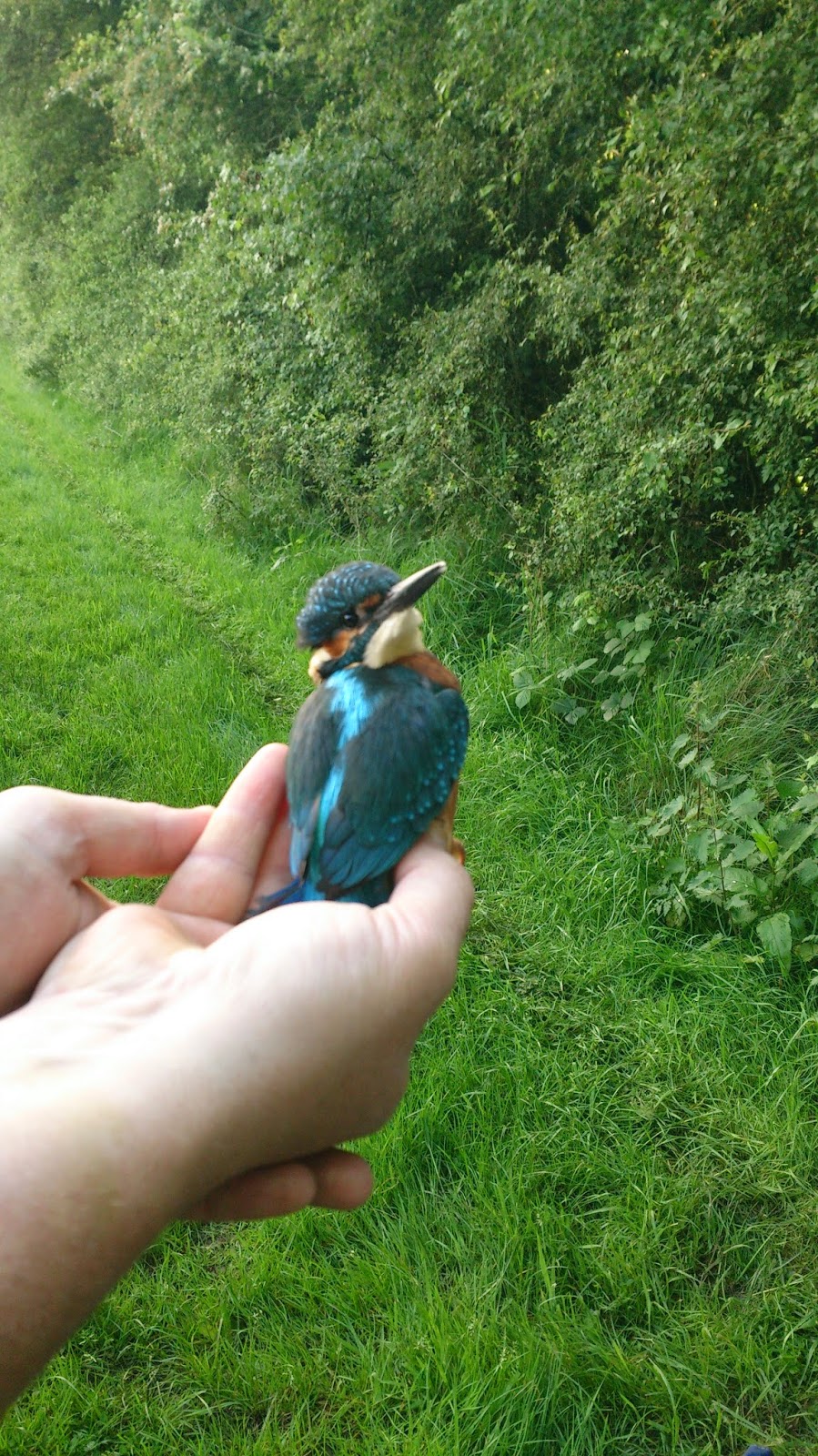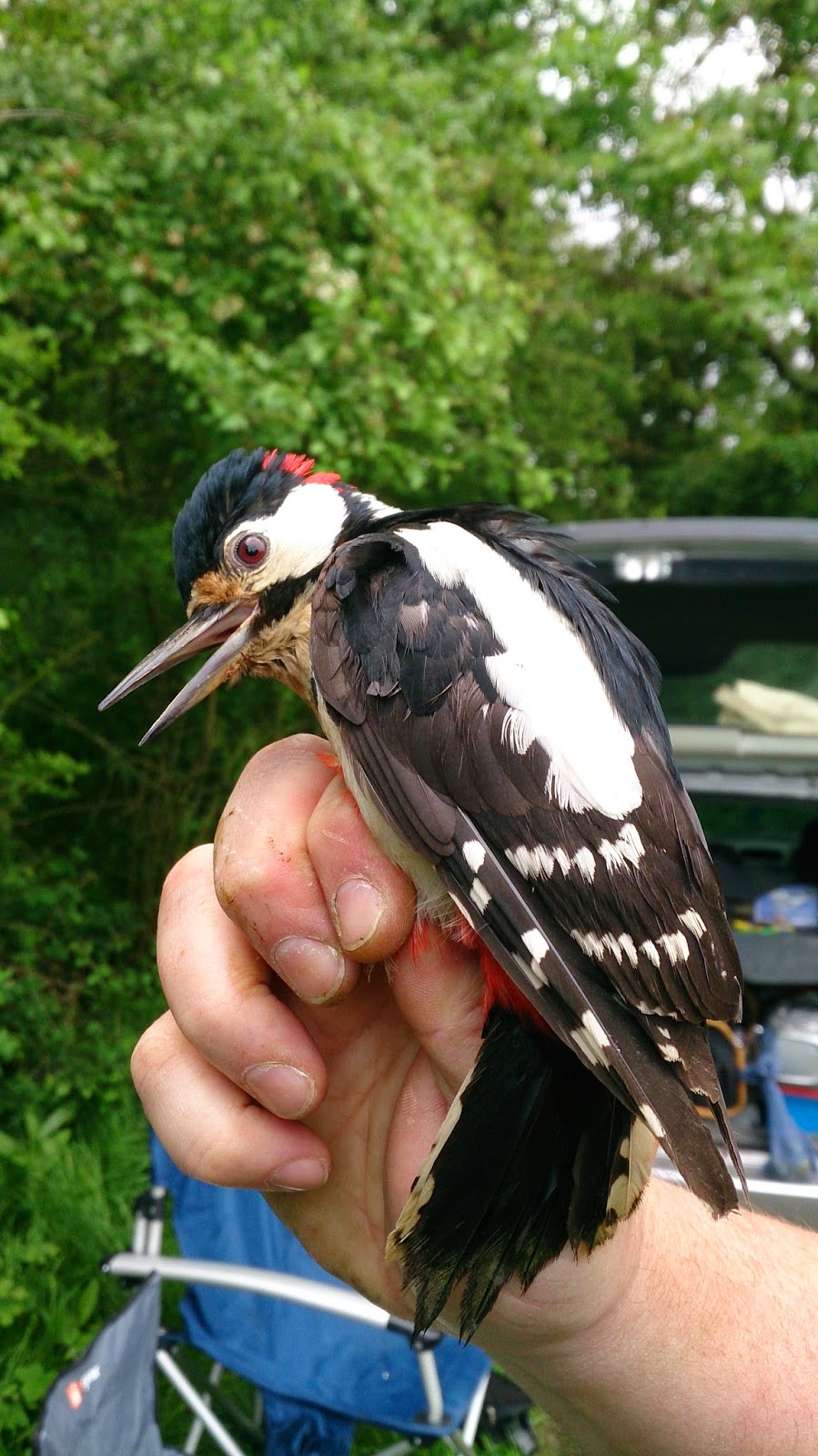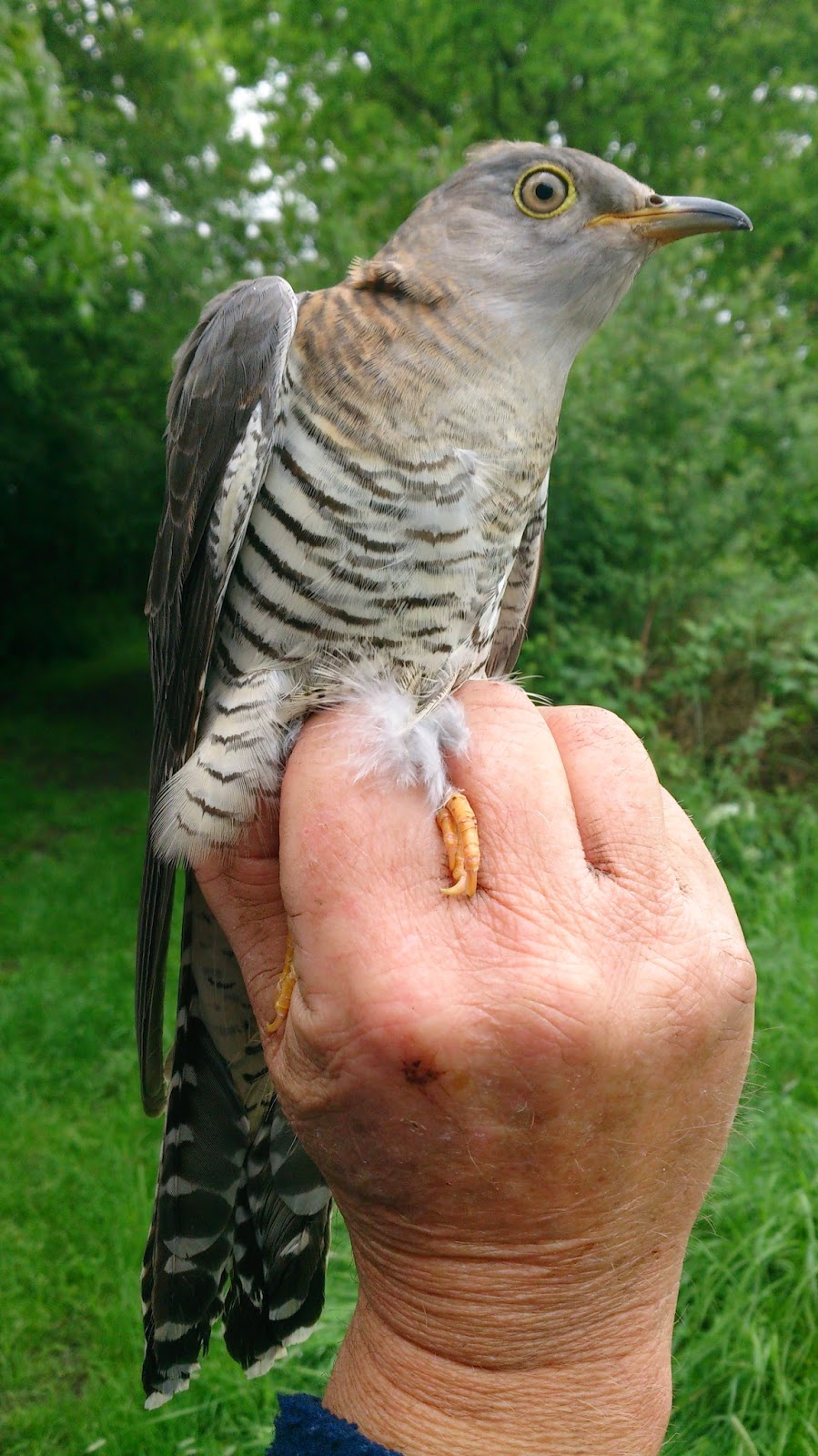We met on the railtrack at 04.45 for our third CES session for the group.The weather was fine but a little breezy, although light showers were forecast. All the nets were erected by 06.00. We had an excellent start to the session. On the very first net round we caught a new juvenile Kingfisher, Simon was extremely pleased. The day continued with the next 2 rounds providing us with retrap male and female Great Spotted Woodpeckers.
.JPG) |
| 3 Male Kingfisher (SCW) |
 |
| 5 Male Great Spot (SCW) |
Soon it was time to take down the nets starting at the far 'Apple' ride which consisted of 3x60' nets. Simon and myself had taken down the first 2 nets and were about to start on the third, when what we initially thought was a bird of prey enter the partially collapsed net. On closure inspection we were delighted to see a female Cuckoo. Fantastic a ringing tick for me and the first Cuckoo ringed at Stanford for over 11years. By the end of the session we had dealt with 48 retraps, 31 new birds, and the rain had held off. A very enjoyable day was had by all concerned.
 |
| 5 Female Cuckoo (SCW) |
 |
| 5 Female Cuckoo (SCW) |
